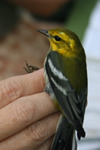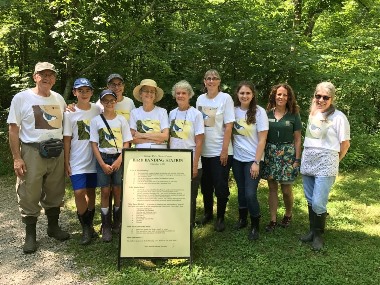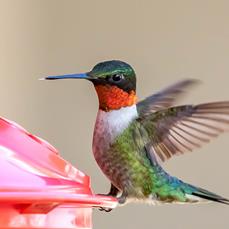Research and Projects
A variety of bird research projects take place in the Warner Parks each year. Visitors are cordially invited to stop by the bird banding table on the Nature Center Campus and see birds up-close and observe bird research in action. Please see specifics below about our research sessions.

A Little Bit About Banding History
The Tennessee Ornithological Society has been organizing official spring, fall and winter bird counts in the area and collecting and publishing this data even before the Park was established in 1927. The Eastern Bluebird Nesting Box Trail was started by Amelia Laskey, a nationally-known ornithologist, in 1936 and is one of the oldest, continuously-run projects in the United States. The Warner Park Bird Banding Station was established at the Nature Center in 1982 with support from Master Banders and local ornithologists Dr. Katherine Goodpasture, Michael Bierly, Dr. Ann Tarbell, and Dr. Charles Farrell. Some projects are year-round while others focus on breeding birds, wintering species, neotropical migrants and migration or a specific bird like hummingbirds or a specific topic such as feathers.
Check out the Tennessee Conservationist magazine for our indigo bunting article and more bird information from around the state:
Tennessee Conservationist magazine
Learn more about Bird Research and Projects in the Warner Parks

Bird Information Research and Data Team
Bird education and research programs and projects are possible because of dedicated volunteers and staff. A team of over 30 volunteers, interns, and staff invest several thousand hours on over 10 projects and many programs that reach over 3000 visitors each year.
Bird Banding Sessions
Visitors are cordially invited to stop by the bird banding table on the Nature Center Campus and see birds up-close and observe bird research in action.
Licensed banders manage the bird banding station and use mist nets and traps to carefully catch, band, and release each bird. Bird banding sessions are scheduled by project.
Depending on the number of birds and the number of trained volunteers assisting that session, we are happy to answer questions about the birds and banding and discuss data collected and bird banding tools. We have some amazing bird banding stories to tell! Of course the safety of the bird is the most important part of banding, and if we are too busy with the birds and unable to talk, you are still welcome to observe quietly and enjoy watching the process.
Sessions will be cancelled for rain, inclement weather or unforeseen emergencies. If you stop by and we are not there, please enjoy the Park and try another day.
Bird Recaptures and Stories

Much can be learned about birds through banding - bird populations, longevity, migration patterns, wintering species, breeding species, changes over time and more. There are many examples of recaptures of resident birds as well as migrating birds that winter and that breed in the Warner Parks.
